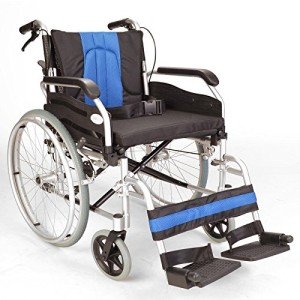Bariatric Transport Wheelchair
Created to be pushed by caregivers, transport chairs feature smaller front wheels and larger rear wheels. They are a popular option for users with limited mobility who can not walk separately.
When looking for a lightweight bariatric transport wheelchair, think about the user's needs and how they'll use the chair. Also, determine any entrances and other areas the chair will travel through.
Seating
bariatric high back wheelchair include a large 22 to 36 inch broad seating location that accommodates extra-large users. The chair seat is made from breathable nylon and comes with cushioned arms that can be eliminated and swing-away footrests. Unlike standard wheelchairs, which are ideal for average body weights, bariatric chairs have much heavier frames constructed from strengthened products and larger rear wheels that make it easier to press them. Talk to a mobility professional to get more information about your alternatives and to identify which kind of wheelchair is right for you. Bariatric wheelchairs are frequently covered by insurance providers like Medi-Cal if your medical condition fulfills their coverage criteria.
Frame

Bariatric transport wheelchairs use sturdy frames made of reinforced materials like steel and have wider seats than basic wheelchairs. They are created for individuals with higher body weights and can hold an optimum weight capacity of 700 pounds. They likewise have larger rear wheels, that make them simpler for caregivers to press. Bariatric wheelchairs are often covered by insurance coverage such as Medi-Cal, depending on the patient's specific medical needs and diagnosis. Ask bariatric high back wheelchair or mobility specialist to assist pick the best chair for your special requirements.
Click here for more info. Medline Bariatric Transport Chair. Crimson Hammertone Frame.
Weight
While standard wheelchairs have lighter frames and smaller wheels, bariatric transport chairs feature heavier-duty products and a larger seat to accommodate users who weigh more than average. Because of their specialized style and construction, they tend to cost more than basic chairs. Nevertheless, some insurance programs like Medicare and Medi-Cal may cover the expense of these chairs if the user fulfills the criteria for coverage. To get more information about which chair is best for you, contact a rehab specialist today.
Wheels
Bariatric transport wheelchairs have bigger rear wheels than standard models, making them much easier to push. They're frequently utilized in healthcare facilities and home settings, where the chair is pushed by caregivers. The extra-large rear wheels also enable the chairs to browse a range of terrain, consisting of outdoors.
Basic wheelchairs typically have smaller sized wheels, that make them more maneuverable indoors however less appropriate for daily use on outdoor streets and other surfaces. Mobility experts advise seeking advice from a doctor or mobility professional to pick the very best wheelchair for your specific needs and objectives.
This durable, nylon strengthened steel transport chair supports patients approximately 500 pounds and includes a large 22" seat, cushioned desk-length armrests, swing-away footrests and hand brakes. The 12-inch rear wheels guarantee a smooth ride in any environment.
